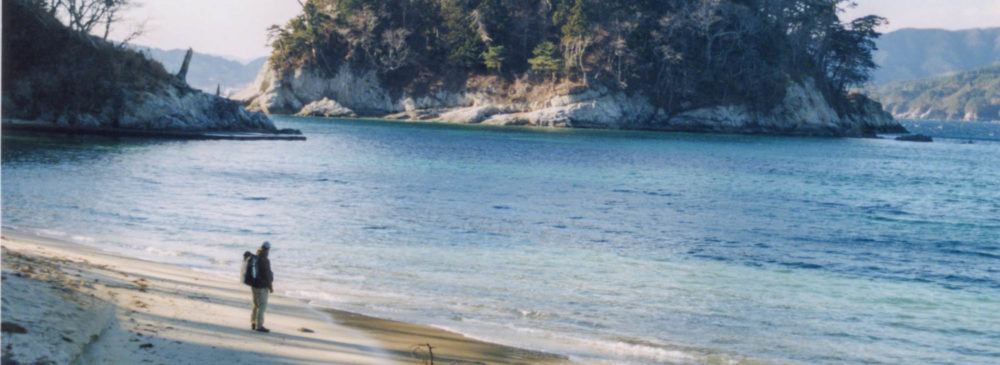
The Michinoku Coastal Trail goes through four prefectures and 29 municipalities. This course meant for journeys on foot joins over 1000 kilometers of paths that belong to and are maintained by all kinds of owners, including local governments. This trail’s future survival depends not only on those in charge of this trail, but on cooperation and collaboration between local groups, guide organizations, individuals, lodging facilities, transportation companies, and those hiking the trail. The Michinoku Coastal Trail Charter was made to share this trail with people from all walks of life. Why was this trail made? Why do we want it to survive and flourish in the future? This charter holds the core values and thoughts that need to be jointly shared over the bounds of time and distance to sustainably collaborate on this trail over a wide area.
Michinoku Coastal Trail Charter
On March 11th, 2011, the Great East Japan Earthquake and Tsunami wrought unprecedented damage to Tohoku’s Pacific coast. It was a major turning point: faced with the fury of nature in a disaster said to happen at this scale once in a thousand years, many people in Japan and throughout the world were forced to consider how we should relate to nature.
After this disaster, the Ministry of the Environment started the “Green Reconstruction Project,” a set of initiatives working for sustainable community planning as well as the preservation of abundant nature and local ways of life for the future. One such initiative is the Michinoku Coastal Trail.
Mr. Noriyoshi Kato, an advocate for walking through natural places when considering how humans and nature should relate to each other, proposed a “national trail leading through the Sanriku Coast national parks, a team effort between government and the people.” Thus this long coastal trail was born, forming a single path along the Pacific coast from Hachinohe, Aomori Prefecture to Soma, Fukushima Prefecture, and passing through four prefectures and twenty-eight cities, towns and villages*.
We hope this natural trail will live on proudly on as a symbol of coexistence of people and nature for the people involved in the trail, that it will provide not only natural beauty and scenery but interactions between people who live in a place and people visiting that place, and that it will value the blessings of nature, the memories of disaster, and ways of life, histories, and cultures formed from harmony with nature. With this hope, we declare the following six values of our charter.
- The trail will be for enjoying beautiful sights and natural features.
- The trail will bring about connections between people who live in a place and those who visit that place.
- The trail will leave lifelong memories of nature’s kindness and harshness.
- The trail will forever testify the memories of disaster.
- The trail will pass on rich nature and cultures to future generations.
- The trail will welcome all who love to walk and will develop with everyone’s help.
* In March 2023, Kakuda City in Miyagi Prefecture joined the Michinoku Coastal Trail management plan, and the MCT now officially goes through four prefectures and twenty-nine cities, towns and villages.